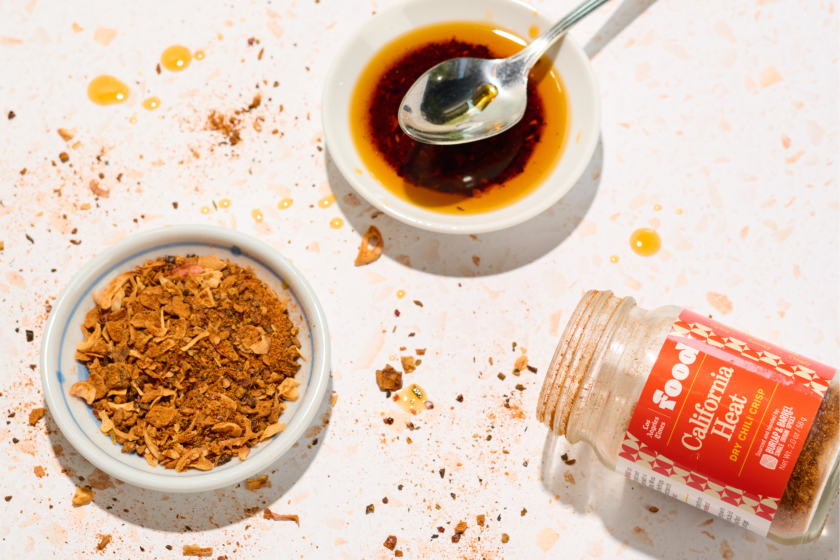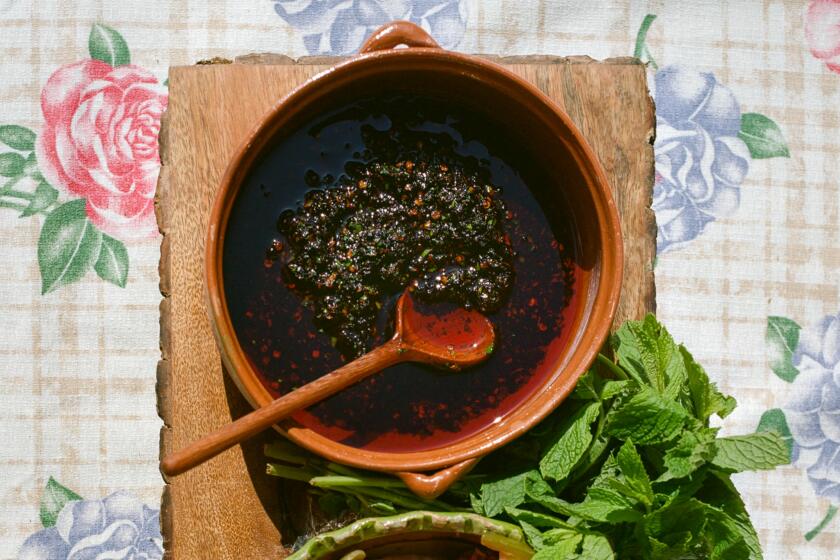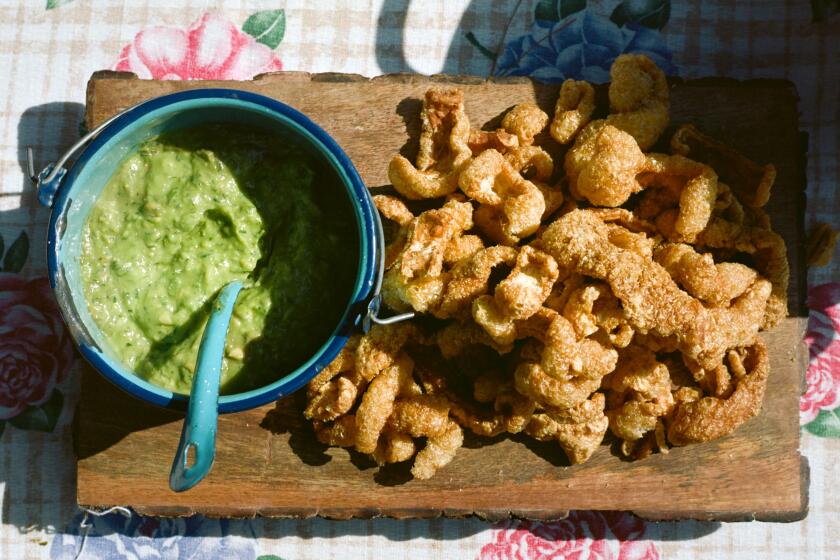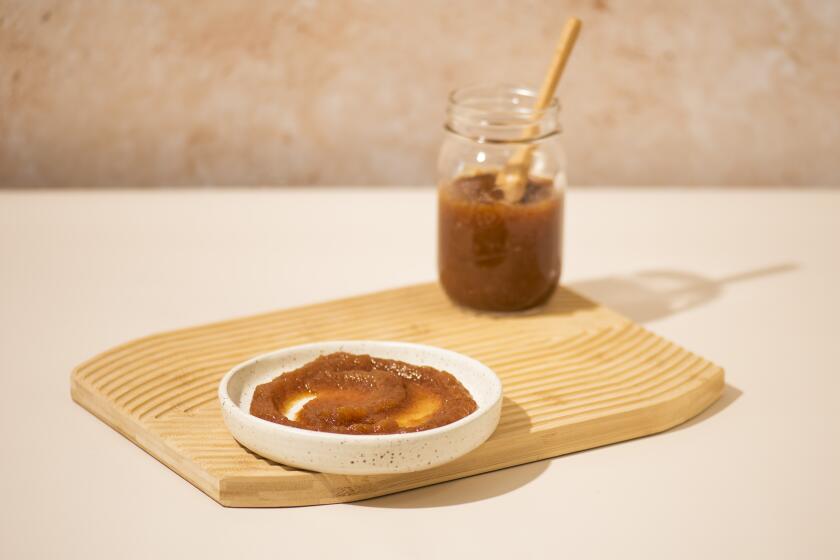Miso-sake marinade

Of all the things he could have done in life, Kenji Tsukamoto has chosen to grow mold for a living. He is a fourth-generation koji-ya, or artisanal “mold maker,” on Sado island on the western coast of Niigata, Japan. It’s rare to find a traditional koji-ya in Japan these days.
In fact, to make ends meet, Tsukamoto derives his income from two other sources: teaching math to children and working as a nature guide. He is as expert on calculus and the native wildflowers of Sado as he is on mold.
“Have you ever left cooked rice out and found a white downy growth on the surface?” he asks. “That’s koji.” Most of us can recount a few encounters with mold growing on a day-old sandwich. These microorganisms live in the natural environment, and some play a beneficial role in the production of food. In Japan, the mold called koji is used for fermenting rice and soybeans to make soy sauce, miso and sake, the three staple ingredients in Japanese cuisine.
Koji’s scientific name is a tongue twister -- Aspergillus oryzae. The Brewing Society of Japan officially named it the “national fungus” in 2006. Tsukamoto’s primary koji-based product is miso, the savory seasoning used most commonly in soups. But to Tsukamoto, miso is more than a seasoning. It is a “living food.”
” Koji is the reason Japanese have the highest life expectancy in the world,” according to the 57-year-old, who goes so far as to suggest that instead of spending money on a doctor, you should spend it on good miso. Maybe it’s because during World War II, being a koji-ya saved his father’s life. Assigned to the bitterly fought-over South Pacific island of Guadalcanal, Tsukamoto’s father was taken off the front line when his commanding officer found that he was a koji-ya, and he was reassigned to watch the general’s horse and make miso. He concocted miso using sea salt, locally grown tropical rice and koji, which he found in food collected from the garbage.
Tsukamoto prepares koji in the muro, a special room in the back of his shop where he also keeps the rice used for growing the mold. On the heavy iron doors of the vault, there are calligraphic writings. The right door says, “One must not expect money and parents to be around forever.” The left door says, “Don’t expect fires and catastrophes can never happen to you.” Sado and the greater Niigata region have been hit with massive tsunamis and earthquakes in the past. The Sadoans don’t take life for granted.
The busiest time of the year for Tsukamoto is after the rice harvest in the fall. First he makes the koji with locally grown Sado rice. Koji mold spores are sprinkled on top of steamed rice to start the incubation.
Temperature control is crucial. The steamed rice is brought down to 96 degrees and the temperature is kept steady. It takes three days and three nights to produce koji. During this period, Tsukamoto gets hardly any sleep. In the wintertime, the room can get down to 36 degrees, but he has a hibachi to keep it warm. “I use binchotan [artisanal oak charcoal made in Wakayama] because it produces gentle heat, he says, making a sound to describe the way the heat travels through the room: “Poh-waaaaaaaaah.” Binchotan charcoal, which is also a favorite of yakitori and unagi (grilled eel) chefs, also produces long-lasting heat and releases no odors or smoke.
When the koji is done -- the word can refer to both the mold and the fermented rice -- it gives off a sweet, ripe apple smell and is safe to eat. The rice kernels are covered with white velvety mold, and it flakes apart. “I eat fresh koji by mouthfuls,” he says, smiling.
The miso is produced in another building, across the street. When you enter the production room, the earthy and sweet aroma of miso hits your nostrils. The miso is kept in old wooden vats measuring 16 feet in diameter and 8 feet in height.
The taste, texture and aroma of miso will vary according to the quality of koji, soybeans or grains, water, salt content, temperature and duration of fermentation. For one type of miso, Tsukamoto uses a ratio of 17 parts koji to 10 parts soybeans. He allows one year for fermentation, including one summer. Some miso makers in the north of Japan allow two years because it takes longer for miso to ferment in colder climates. The mild and sweet saikyo miso from Kyoto in the south contains a lot of koji so it undergoes a short fermentation period of six months. And compared with the red miso Tsukamoto makes, it has a shorter shelf life.
Tsukamoto also offers a premium-grade miso that is made with local seawater.
Tsukamoto climbs on a ladder to reach the large wooden vats, using a long wooden paddle to mix the miso, following the traditional way. Sadly, the artisans that make the wooden vats have disappeared from Sado, and there are only 10 left in Japan. Tsukamoto’s vats are more than 100 years old and still holding.
He has looked into contemporary production methods for koji and miso, such as using stainless steel or concrete vessels, and chemical processes that speed up fermentation. “I can’t imagine putting a living food in a concrete vat,” Tsukamoto says.
The wooden barrels have an essential function in the miso making, he says. “The wooden vats breathe. This helps make good miso. They sweat during the rainy season, helping to adjust the moisture level inside the vats. In the dry season, the vats will take the exterior moisture and bring it inside. Tsukamoto produces about 10 tons of miso a year, half of which gets sold in Tokyo.
There is a large window in the back of the miso factory through which there was once a view of the sea. It was a favorite place for Tsukamoto’s father to stand and look out during his breaks. The sea view is now gone because a building stands in the way. When asked what plans Tsukamoto has for the future, a big smile fills his face. His 29-year-old son, who finished college with a major in science, has returned to the island to become a koji-ya, after spending a year in Germany.
“While living abroad, my son was often asked what his father did for a living but he couldn’t explain it well,” Tsukamoto says. “It motivated him to learn koji-making and share it with the rest of the world.
“There are invisible things in the world like koji that can affect your body and soul in good ways. It’s like love.”
In a nonreactive container, mix miso, sake, mirin and sugar. The marinade should be smooth enough to spread easily. The basic ration to keep in mind is 10 parts miso to 1 part sake to 1 part mirin. The consistency is softer than peanut butter. If you need to make it softer, add more mirin or sake. Adding mirin will make the marinade sweeter. If you like it firmer and longer-lasting, add less sake and mirin.
You can reuse the miso marinade if you wrap the meat or vegetables in cheesecloth before marinating: Double-line a sealable container with the cheesecloth, add the food and wrap the cheesecloth completely around it. Pour the marinade over the top. When you’re ready to cook, open the folds of the cheesecloth and take out the food. If some marinade sticks to the food, you can rinse it off lightly and pat dry with a paper towel.
Get our Cooking newsletter.
Your roundup of inspiring recipes and kitchen tricks.
You may occasionally receive promotional content from the Los Angeles Times.















